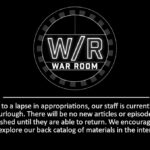
The DoD’s view of space power has been myopic, understandably centering on the value of military space technology to those on Earth.
Eight months before the Soviet launch of Sputnik in 1957, Air Force Major General Bernard Schriever made an ominous prediction: “Several decades from now the important battles may not be sea battles or air battles, but space battles.” It took the United States sixty years to follow through on Schriever’s vision and declare space a separate warfighting domain. However, despite this acknowledgement, the Department of Defense (DoD) has not fully embraced Schriever’s idea; the dominant view remains that space technology is meant to revolutionize terrestrial conflict rather than for use in its own right on the orbital battlefield. Fortunately, the commercial space sector has presented a window of opportunity through the advent of reusable technology that the DoD can pursue to ensure victory in these inevitable battles.
The DoD’s view of space power has been myopic, understandably centering on the value of military space technology to those on Earth. After all, humans have fought conflicts on land, sea, and air throughout history, so seeing space as secondary is a natural inclination. Even though the United States has been employing satellites since the late 1950s, the 1991 Gulf War played a key role in reinforcing this “space is for Earth” view. Military space capabilities such as the Global Positioning System (GPS), satellite communications, and missile warning unveiled themselves for the first time in a major conflict. These effects were so revolutionary towards U.S. success that many people call it the “first space war,” even though it was largely an air and ground campaign. This moniker gained momentum among the military community, but greatly misrepresented Schriever’s vision by conflating space war with terrestrial war. What followed was persistent integration of U.S. military satellites into counterinsurgency operations in Afghanistan and Iraq, further cementing the prevailing mindset. Today, commercial satellites offer similar capabilities and significantly outnumber military spacecraft, but these new conditions have not disrupted the overall paradigm. Satellites flown by private companies have generated enormous but familiar value to the United States during the ongoing Russia-Ukraine war, with some going so far as to label it the “first commercial space war.” This historical pattern of Earth-bound space effects continues and still greatly enhances traditional warfare, but it is time for the DoD to shift the focus of space innovation into securing space itself.
As the DoD examines technologies that can spark a military revolution in the space domain, its policy should be to follow the lead of the commercial space industry. Most readers will be familiar with the way that “new space” companies like SpaceX have revolutionized commercial space with reusable rockets, this technology will have equally disruptive implications for military use that will bring Schriever’s prediction closer to reality. For decades, high costs and lengthy production times for single use rockets limited the participation and cadence of space activity. Powerful nations understood the tyranny of the launch cycle and reserved those rare opportunities for exquisite payloads meant to address strategic objectives on Earth. A build-up of any sizeable military presence in and for space was simply unsustainable and, until recently, unwarranted under this model. However, using more affordable and frequent reusable rockets increases the DoD’s chances to rapidly populate desired orbits as a means to support and defend national objectives in space. For instance, achieving faster and greater military presence will enable the United States to promote and foster badly needed norms of responsible behavior that clarify the acceptable boundaries between aggressive versus peaceful activities. Frequent military launch capability would also fast-track the employment of critical military infrastructure, such as the National Security Space Architecture and the Cislunar Highway Patrol System (CHiPS), so the U.S. Space Force can properly set warfighting conditions within U.S. Space Command’s new area of responsibility. The DoD could also implement a tactically responsive launch program as a means of rapid satellite replacement to deter adversaries from engaging U.S. assets on orbit. Moreover, the military could leverage side effect benefits to traditional global operations. Organizations requiring global reach, such as U.S. Transportation Command, could execute near-instantaneous suborbital resupply missions to better support emergency operations around the world. Each of these military applications of reusable commercial rocket technology ultimately increases U.S. leadership, deterrence measures, and military presence in space, all of which are critical prerequisites for successful warfighting campaigns.
Like all military operations, space warfighting depends on accurate intelligence and the most basic form is known as Space Situational Awareness (SSA), which involves tracking and characterizing space objects.
While the world watches in awe of reusable launch demonstrations by SpaceX and Blue Origin, a national effort called In-space Servicing, Assembly, and Manufacturing (ISAM) opens up an entirely new operational concept to fight Schriever’s space battles by introducing the transformational ability to extend the life of military satellites practically indefinitely. Unlike tank, aircraft, and warship personnel, space operators face unique physical challenges to maintain, repair, or refuel satellites once launched into orbit. The “servicing” aspect of ISAM addresses these challenges by routinizing difficult Rendezvous and Proximity Operations (RPO) to safely dock or move satellites close to one another to complete critical procedures. The commercial space industry recognized the satellite servicing gap and has planned several near-term programs as well as conducted the first-ever satellite mission extension experiments. A thriving servicing industry not only makes debris removal, satellite inspections, object tugging, satellite repair, and refueling game-changing functions for the new space economy, but also imperative operations for achieving military space superiority. It represents the essence of Schriever’s vision of space warfighting by giving U.S. Space Command the technological tools to implement classic warfighting principles and doctrinal joint functions on par with traditional domains.
The most immediate impact to U.S. Space Command is the enhancement it brings specifically to the on-orbit maneuver, intelligence, protection, and sustainment warfighting functions. As already determined, spacecraft maneuvering is a crucial element of satellite servicing and concurrently serves as the primary warfighting benefit that underpins all other joint functions. Like all military operations, space warfighting depends on accurate intelligence and the most basic form is known as Space Situational Awareness (SSA), which involves tracking and characterizing space objects. With satellite servicing technology, U.S. Space Command could radically increase their SSA by tasking inspection satellites to conduct close-range surveillance of potential threats in times of conflict. Having more agile and dispersed surveillance vehicles patrolling orbits of interest would alleviate U.S. Space Command’s difficulty of determining hostile intent by generating a more robust intelligence assessment. Likewise, more sensors maneuvering the orbital battlefield would assist military analysts in the discrimination of active satellites versus space debris on paths with critical U.S. assets, thus enhancing collision avoidance processes and creating a safer orbital environment for military spacecraft. In the area of protection, U.S. Space Command could conduct its space defense mission through the employment of reliable bodyguard spacecraft in established self-defense zones around high-value assets. However, the most obvious joint function impacted by satellite servicing technology is in the area of sustainment. U.S. Space Command could employ fleets of logistics satellites meant to inspect, refuel, repair, or relocate satellites performing critical national security tasks in traditional Earth orbits or in strategic Cislunar zones, which are the key to more distant and emergent space operations. Overall, satellite servicing technology improves these joint functions as well as U.S. Space Command’s ability to apply familiar warfighting principles in a domain that will eventually experience a familiar form of conflict.
In conclusion, Schriever’s recognition that space would become a separate but equal battleground was indeed visionary, but decades of narrow thinking about Earth-bound space support has prevented the realization of his vision. Yet commercial innovation in the area of reusable technology for launches and on-orbit servicing is underway, setting optimal conditions for the first exo-atmospheric “military revolution”. At a time of resurgent strategic competition, off-planet warfighting will become a reality and this technological revolution is the first step towards securing U.S. victory against challenging nations. China and Russia have recently demonstrated threatening on-orbit behavior and will continue to do everything possible to challenge U.S. dominance in space. The DoD must make the visionary decision to quickly incorporate the superior technology at hand to outpace these threats and guarantee success in the “first in-space war” that is sure to come.
Ben Ogden is a Colonel in the U.S. Army and the Space Operations Officer within the Center for Strategic Leadership. He is a graduate of the AY17 Resident Course at the U.S. Army War College.
The views expressed in this article are those of the author and do not necessarily reflect those of the U.S. Army War College, the U.S. Army, or the Department of Defense.
Photo Description: Screencap of the European Space Agency (ESA) video Distribution of space debris in orbit around Earth displaying the path of all tracked objects larger than 1 mm in orbit around Earth. There are an estimated 130,000,000 objects displayed.
Photo Credit: Courtesy of the European Space Agency (ESA)




